All electronics fixed, but still problems…
Posted: 23 September 2011 Filed under: Electronics, Pinball Champ '82 | Tags: cpu, display, electronics, pinball, sound, test program, zaccaria, ZM1550 Leave a comment »
The mailwoman came with goodies this morning; four 3081 chips! So I put them in the CPU board and ran Leon’s test EPROM again. Victory!
So I mounted the board back into the pinball machine, connected everything and switched it on. Not so good… The sound was weird, only a few cracks and screeches would come out of the speaker.
I disconnected the sound board from the CPU board and ran the test and all went well, so clearly there was a problem with the communication between the CPU board and the sound board. I checked the schematics and the only thing that could be wrong was the entry stage behind CN7.
Using my multimeter I immediately found that all the data lines where shorted to the +5V. So only the resistor array ICR6 or the 74LS244 could be the cause. So I started with desoldering the resistor array, but that wasn’t the problem. So I desoldered the 244 and found the culprit!
Off to the store I went. Bought a couple of BF422’s and a 4042 as well for the two display driver boards that needed them and even went round to the hardware store to get some screws, there’s a lot of screws missing in the cabinet and head.
Back home, I put all the components where they should be and succes! I have sound!
The two display driver boards got their components too and now I have 4 working displays.
Next week my ZM1550’s should arive and then I can fix the last display.
And that’s it for the electronics… OR IS IT???
The game still won’t start. No flickering lights, no sound, no highscore showing, nothing… just all 0’s on the displays and that’s it.
When I put DIP switch 4 in PRGM mode, the soundboard now makes the annoying warning sound and I can do all the tests, reset the accounting and set all the options. So I set the options, resetting the ones that already had a good value, clear the accounting and do the tests. All tests are fine. The displays do their thing, the lights go on and off, the solenoids scare me and the sounds are played in order. But then there’s the button test (test #2) that just shows 18. And whatever button I press, it doesn’t change. I guess I’ll have to go through the wire harness and measure what signals I do get.
Guess that’s my queue to end this article and get back to work!
Back home and back to work!
Posted: 18 September 2011 Filed under: Electronics, Pinball Champ '82 | Tags: cpu, display, electronics, eprom, memory, pinball, sound, test program, zaccaria Leave a comment »
Finally back from Sweden. There were quite a few packages waiting for me! Unfortunately, the TMS40L45 wasn’t one of them, so I couldn’t start work on the CPU board.
Or so I tought…
I started Leon’s test EPROM again and started testing all the outputs since I skipped over that test to find out if the memories where good. Well, I found two 3081 chips that are dead… that kind of explains why the LED on the soundboard always comes on when I attach it to the CPU board. So I’ve ordered a couple of those 3081’s and they should be here in a couple of days.
I also saw that all the signals on the CN14 connector for the displays were there, so I started fooling around with the idea of writing a little program to see if the displays still work. I guess I can’t wait for the CPU board to be fixed so I can use the built in tests. And it does keep me out of other trouble 😉
Anyway, I’m waiting for my EPROM to be erased to put the 3rd try on it. I have a good feeling this time… But then again, I had a good feeling every time.
If it works, I’ll let you know and post the program and some pictures.
The electronics
Posted: 30 August 2011 Filed under: Electronics, Pinball Champ '82 | Tags: cpu, electronics, pinball, power supply, sound, zaccaria Leave a comment »
Before switching on the pinball machine for the first time, I checked the input voltage settings on the main transformer and the fuses there and I checked the fuses on the power supply board. I needed to replace one fuse, it looked good, but when I measured it with my multimeter it failed the test.
Then I finally switched the machine on. Nothing happened. Then I plugged in the power cord and tried again… Lights came on, displays flickered at random and then went out. That was it.
Clearly things are not working as they should, time for some troubleshooting.
So where to start? With the power supply ofcourse!
The first thing I noticed was no -5VDC due to a defective 7905. Off to the store I went and now the power supply has a brand new 7905.
Unfortunately after fixing the -5VDC I tested again and the 170VDC was gone. After a few measurements I noticed that TR3 (2N3440) had come loose from the PCB. Shabby soldering? That knocked out R6 (47 Ohm 3W) as well. Off to the shop I went again. I had to use a 5W resistor, but that’s not a problem.
I reconnected the power supply board into the pinball machine and tried again. Except for a pop from the loudspeaker when switching on nothing changed. I disconnected everything except the sound board and after pressing the test button on it, the LED blinked 5 times and the pinball machine started talking to me 🙂
The Sound Test video, best viewed with VLC media player (see my links section).
I disconnected the sound board and reattached the CPU board. It would not boot. After some reading on zaccaria-pinball.com (see my links section) I checked the Power Fail signal coming from the power supply board and yes, it was the wrong signal 🙁
So I did what all good technicians do and disconnected the lead from the connector. Problem solved. I promise to get the power fail circuit fixed later on. I promise!
After retrying to boot the CPU, it actually did… sort of. I starts booting but then keeps hanging somewhere. When measuring the test points, I don’t get the pulse signal on TP6. Further testing and digging in the schematics is necessary. To be continued…
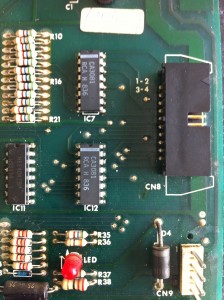
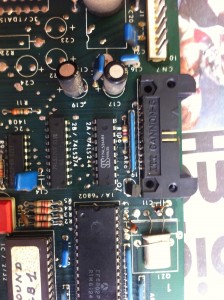
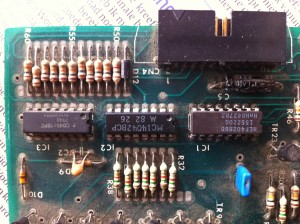
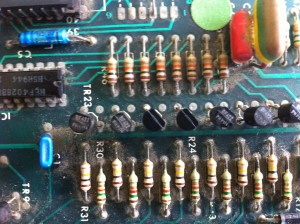
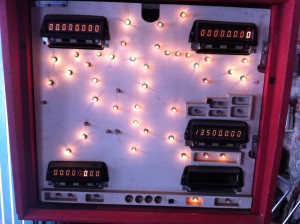
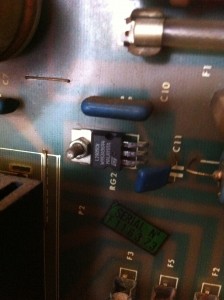
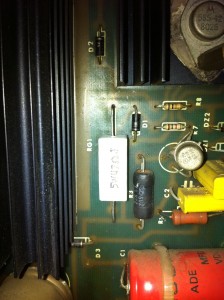

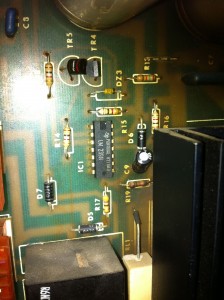
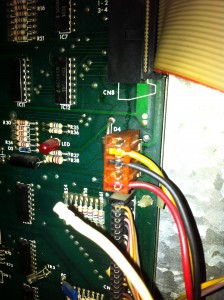
 Flippers.be
Flippers.be Videolan.org – The home of VLC
Videolan.org – The home of VLC